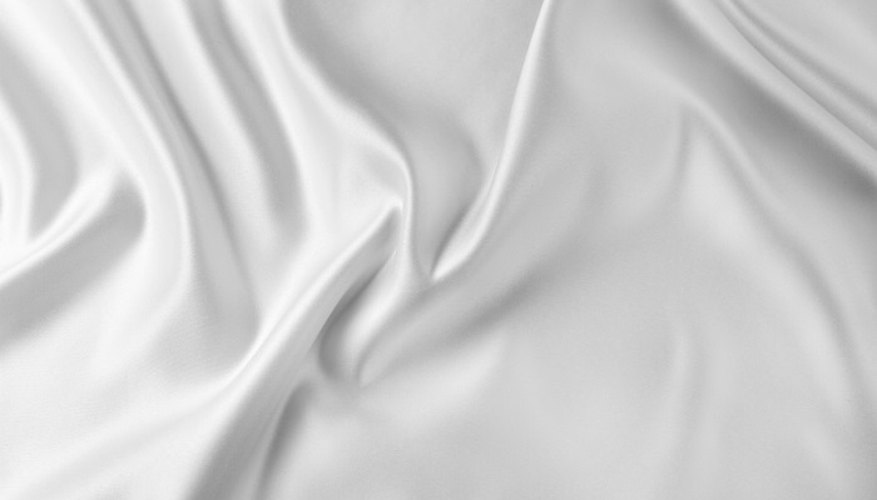Silk fabric is made from natural, protein-based threads. This delicate, luxurious fabric requires special cleaning methods to maintain its quality and colour. Silk can turn yellow for various reasons, such as exposure to perspiration, extended storage time and improper cleaning methods. Although most silk garments are labelled "dry clean only," you can wash 100 per cent silk fabric at home with gentle products and special care.
- Silk fabric is made from natural, protein-based threads.
- Although most silk garments are labelled "dry clean only," you can wash 100 per cent silk fabric at home with gentle products and special care.
Fill a laundry tub or sink with warm water and add 18 ml (1 tbsp) of plain soap flakes per gallon of water. Mix the water with your hand to dissolve the soap flakes.
Submerge the silk item in the soapy water and swish it gently until the yellow areas begin to fade.
Empty the laundry tub or sink, and rinse the silk item with water until no soap residue remains.
Refill the tub or sink with cool water and add 60 ml (1/4 cup) of white vinegar.
Swish the silk item in the vinegar water and rinse it thoroughly with cool water.
- Empty the laundry tub or sink, and rinse the silk item with water until no soap residue remains.
- Swish the silk item in the vinegar water and rinse it thoroughly with cool water.
Lay the silk item flat on a towel and roll up the towel to absorb any excess water.
Iron the damp silk item with a medium-hot iron to dry. If the silk begins to dry on its own before ironing, dampen it with a wet cloth. Do not allow the silk to air-dry, as it can cause the fabric to turn yellow.
TIP
Test a hidden area for colour fastness before washing.
WARNING
Do not use regular washing powder, enzyme-based cleaners or chlorine bleach on silk. Do not allow silk items to air-dry to prevent yellowing. Do not spot-clean silk, as it can change the fabric's colour and leave permanent marks.
